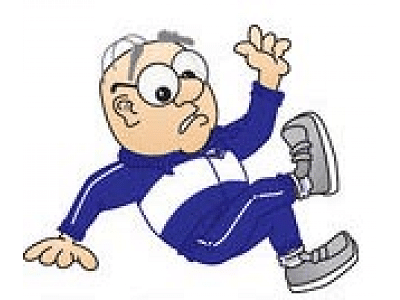Can you guess how many billions of dollars in medical costs are attributable to falls amongst adults over 65? $10 billion? $20 billion? Try $50 billion. 
While it’s fairly well-known that older adults are at a higher risk than other groups for experiencing a fall, as a senior or a caregiver to one, you may not quite grasp the magnitude of how falls affect older adults, their families, and the healthcare system overall.
More Seniors are Falling
Why do over a quarter of seniors experience at least one fall every year? The risk factors seem to be growing. In addition to general age-related muscle loss that can contribute to leg weakness, seniors are experiencing increasing rates of:
- Chronic illness – long-term conditions including diabetes, arthritis, Parkinson’s, multiple sclerosis, Alzheimer’s and stroke can all impact balance, coordination, and mobility. With any of these factors at play, falls are more likely.
- Medication usage – studies show that not only are four out of five seniors taking at least one medication per day, but many are also taking more than one medication, including those that may have interactions or side effects which can contribute to a fall, like dizziness or faintness.
- Aging alone – as more and more adults seek to age in place, they oftentimes ending up doing so on their own. Even if caregivers or family members visit intermittently, seniors living on their own may attempt seemingly harmless activities that put them at higher risk for falling like climbing stairs while dizzy to get to bed.
- More adults are becoming “seniors” – the Centers for Disease Control report that upwards of 10,000 adults turn 65 in the U.S. every single day. If simply being older is a risk factor for falling, it’s easy to see how more fall incidents are occurring.
Mortality Rates from Falls are Climbing
Even a seemingly benign fall can result in debilitating injuries like a hip fracture, head trauma, lacerations, sprains, and so forth. Not only can this affect mobility and activity levels, but fall injuries can negatively impact a seniors independence, their ability to live on their own, and their ability to drive.
But what about death? Do falls contribute to higher mortality rates among seniors. Recent research says yes.
A 2018 morbidity and mortality report from the Centers for Disease Control looked at the incidence rates of injuries and deaths from falls between 2007 and 2016. It found that the number of seniors who died from a fall increased by over 30 percent. That’s a huge jump.
Over 29,000 adults over 65 died as the result of a fall in 2016 up from just over 18,000 adults in 2007. Falls that result in injuries can lead to hospitalization and even surgery, both of which put older adults at higher risk for infection and other mortality-associated factors.
Serious Fall Prevention
Luckily, additional research has shown that even one fall prevention tactic can help lower a senior’s risk for death. These include:
Checking medications – it is critical that seniors and their caregivers check with all health care providers (family doctors and specialists) about medications. All prescriptions and over-the-counter medications (the types, dosages, and schedules) should be discussed with doctors to catch any potential interactions as well as look at side effects that could lead to falls. These even include dietary supplements. Common medications that may affect balance and alertness include blood pressure medication, sleep aids, and antidepressants.
Balance exercises – cardio and strength-training will always play a critical role in helping seniors maintain a healthy weight and stave off lifestyle diseases but balance exercises will lend themselves directly towards preventing falls. Seniors can use practices like yoga and Tai Chi as well as workouts with balance discs to strengthen core muscles, hone coordination and agility skills, as well as build balance confidence.
Upgrading the living environment – it often falls on caregivers to help seniors upgrade their living environment to remove hazards and add tools which can help prevent falls. This can include cleaning up clutter, clearing common pathways, and possibly even moving sleep quarters to ground floor rooms. Installing grab bars, railings, ramps, shower chairs and so on will also equip a senior with the devices they need to successfully manage tricky environments like bathrooms and stairways.
Scheduling regular checkups – additional factors like vision and hearing loss contribute to falls as well. Regular checkups for vision, hearing, and annual well-checks can help seniors and caregivers catch fall-related risk factors sooner rather than later and take early action. Regular checkups also allow seniors and their caregivers to discuss the details of any falls that have already occurred as well as concerning symptoms like joint pain, nerve pain, or shortness of breath that can contribute to falls.